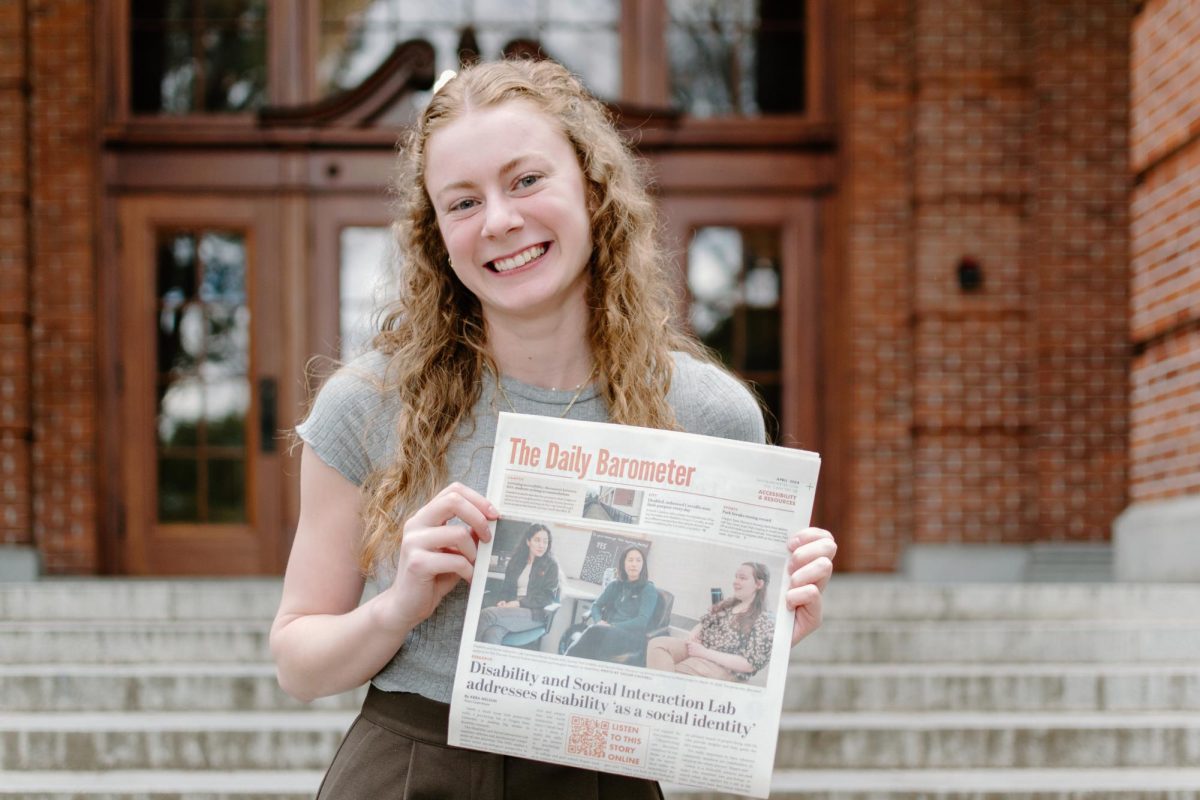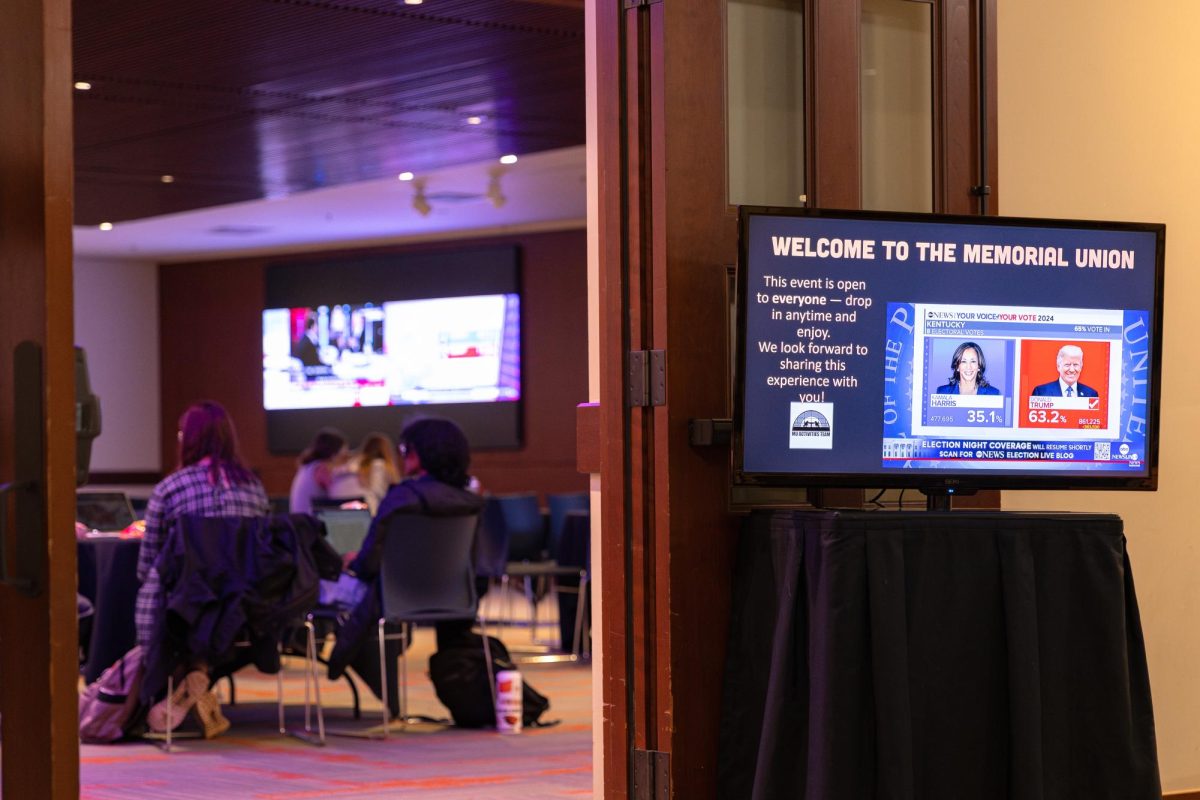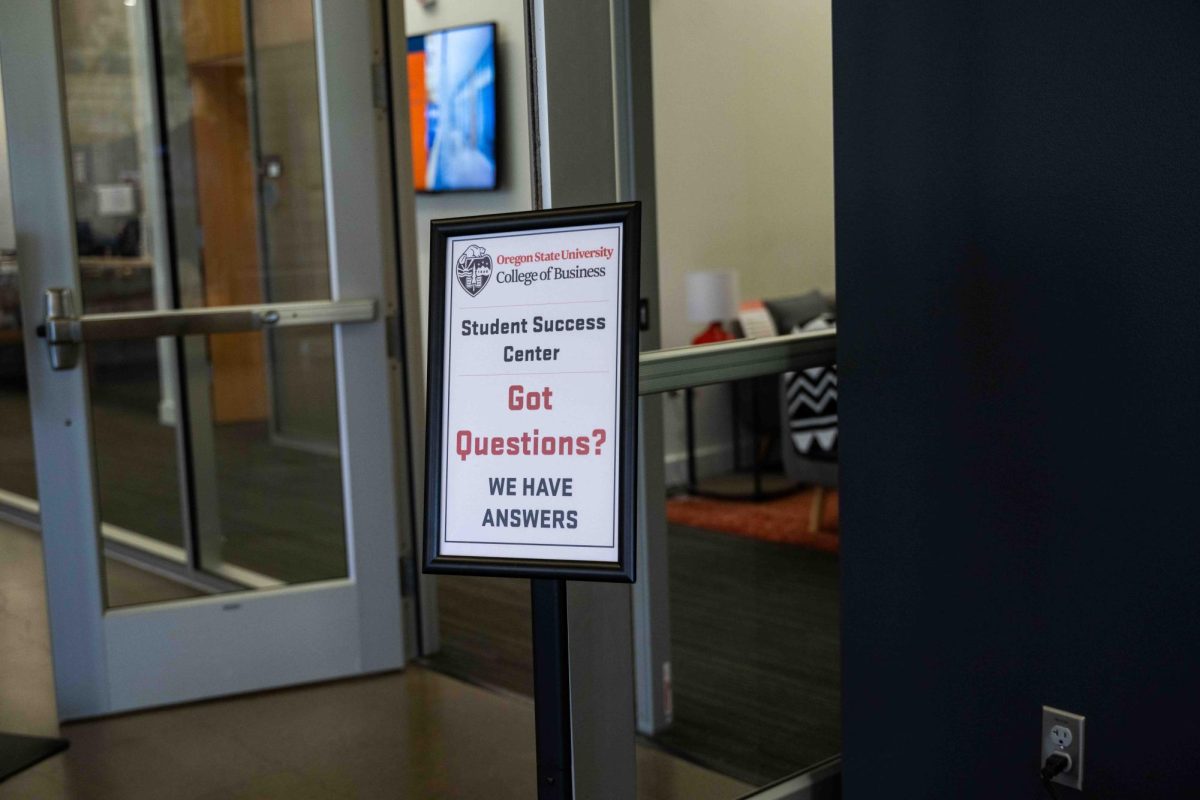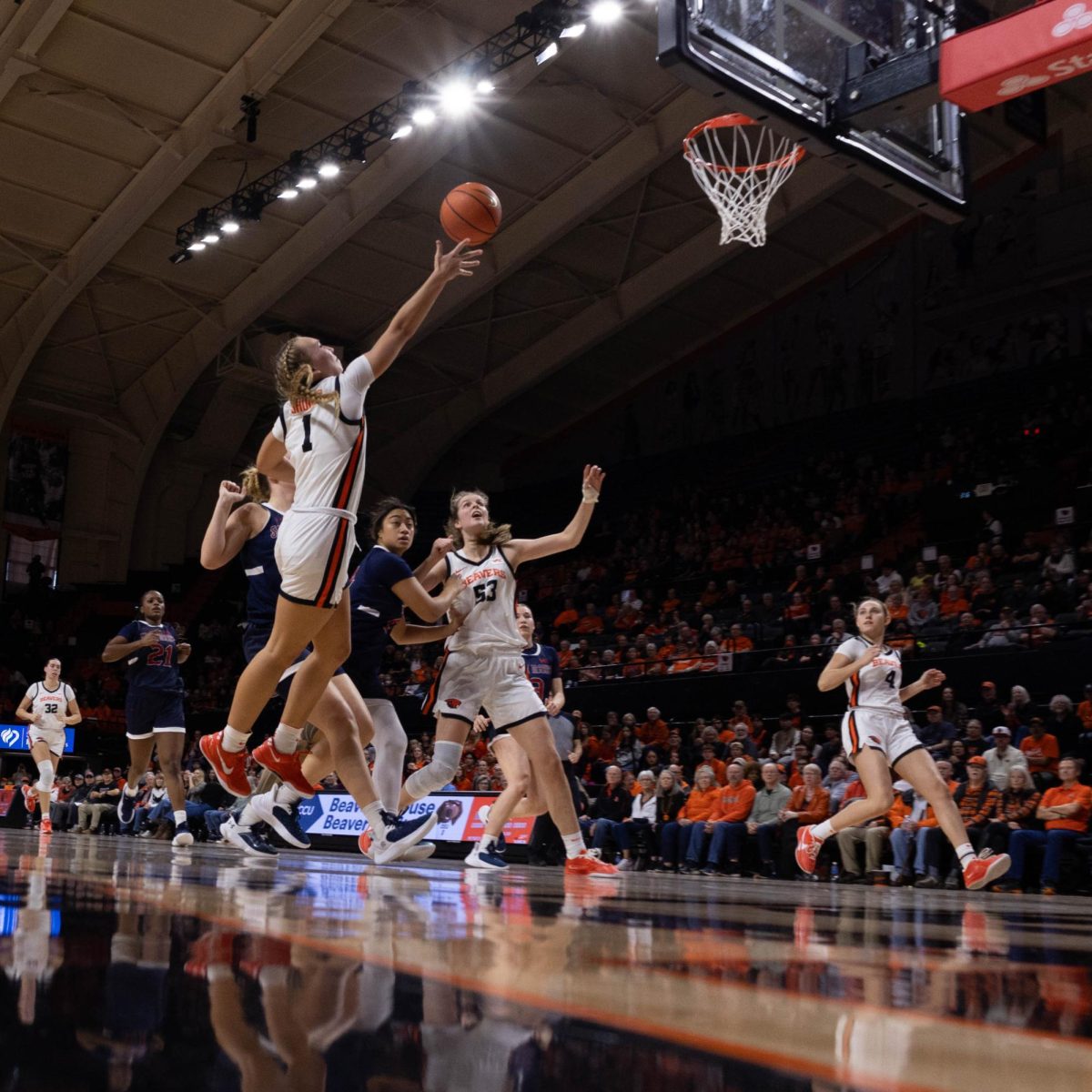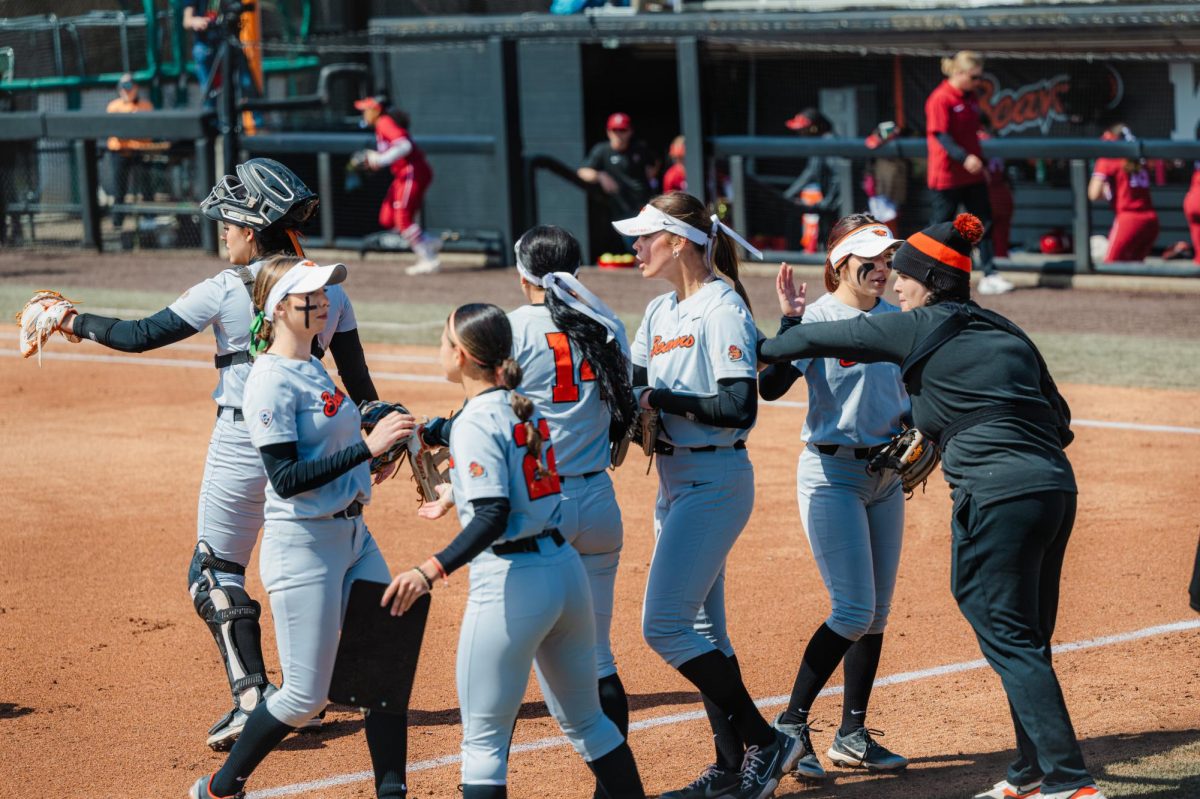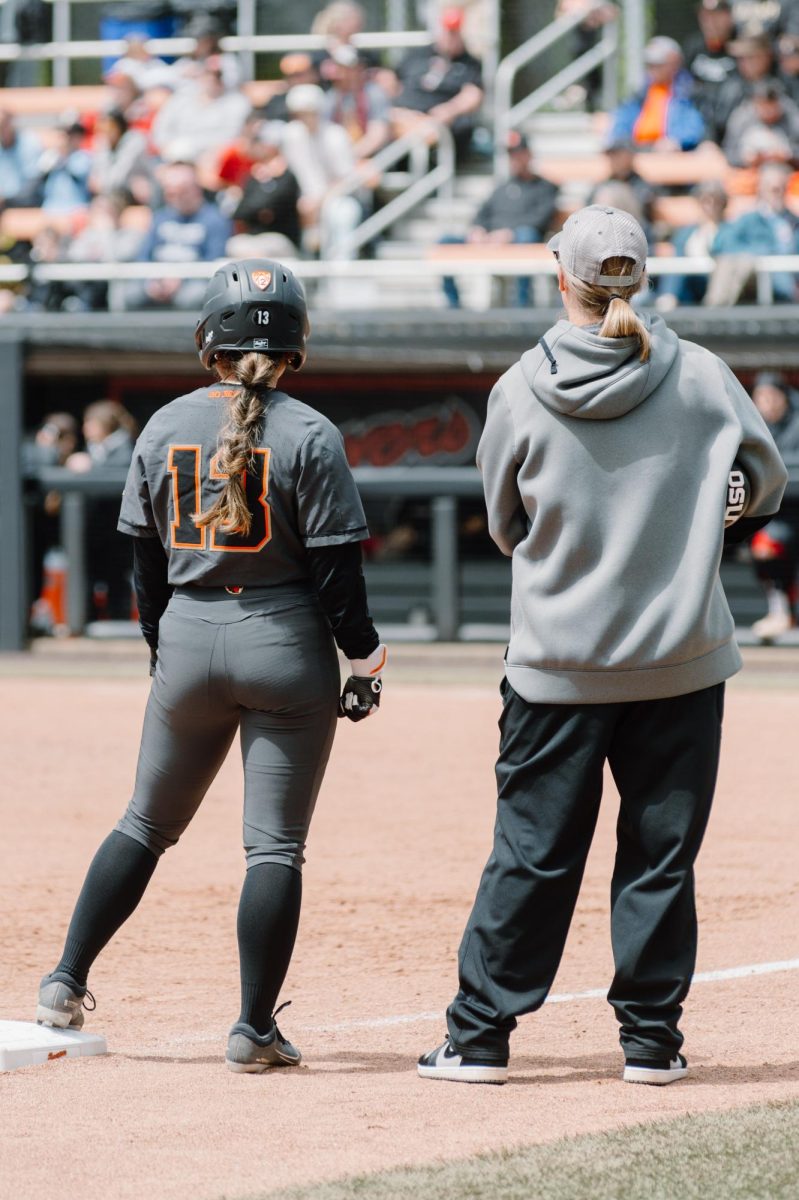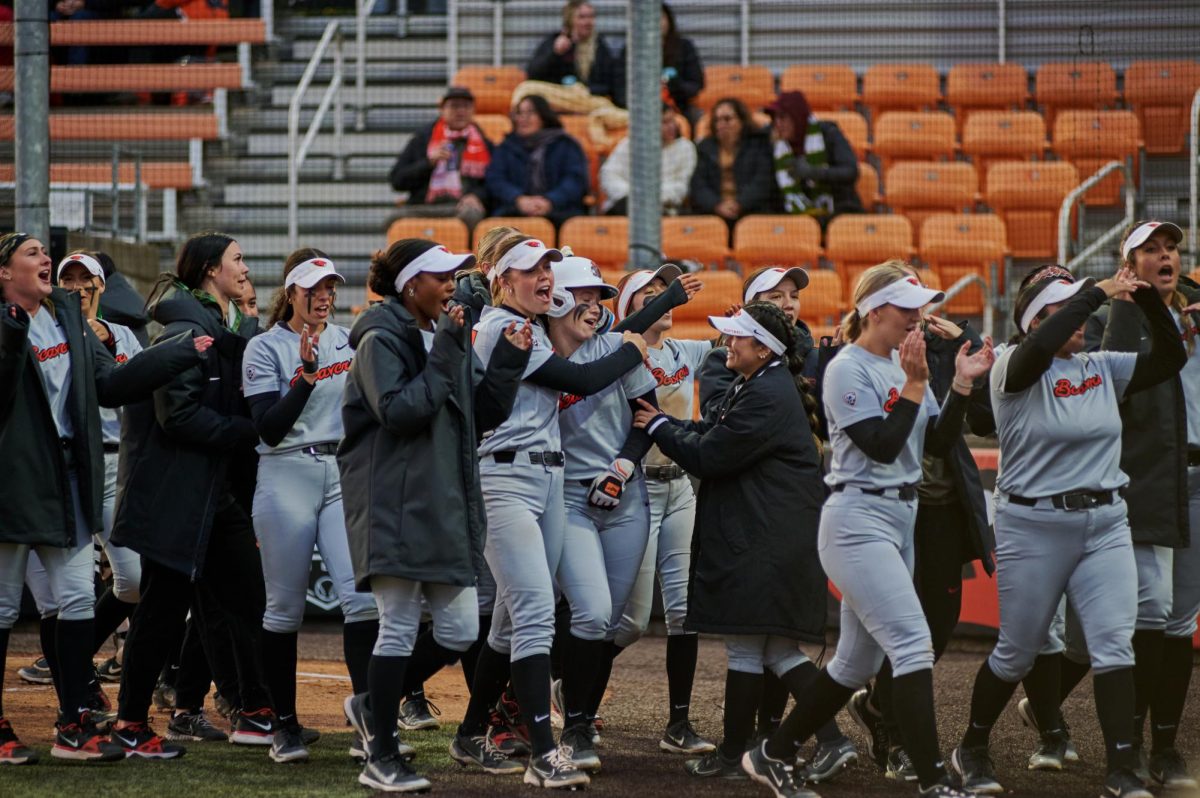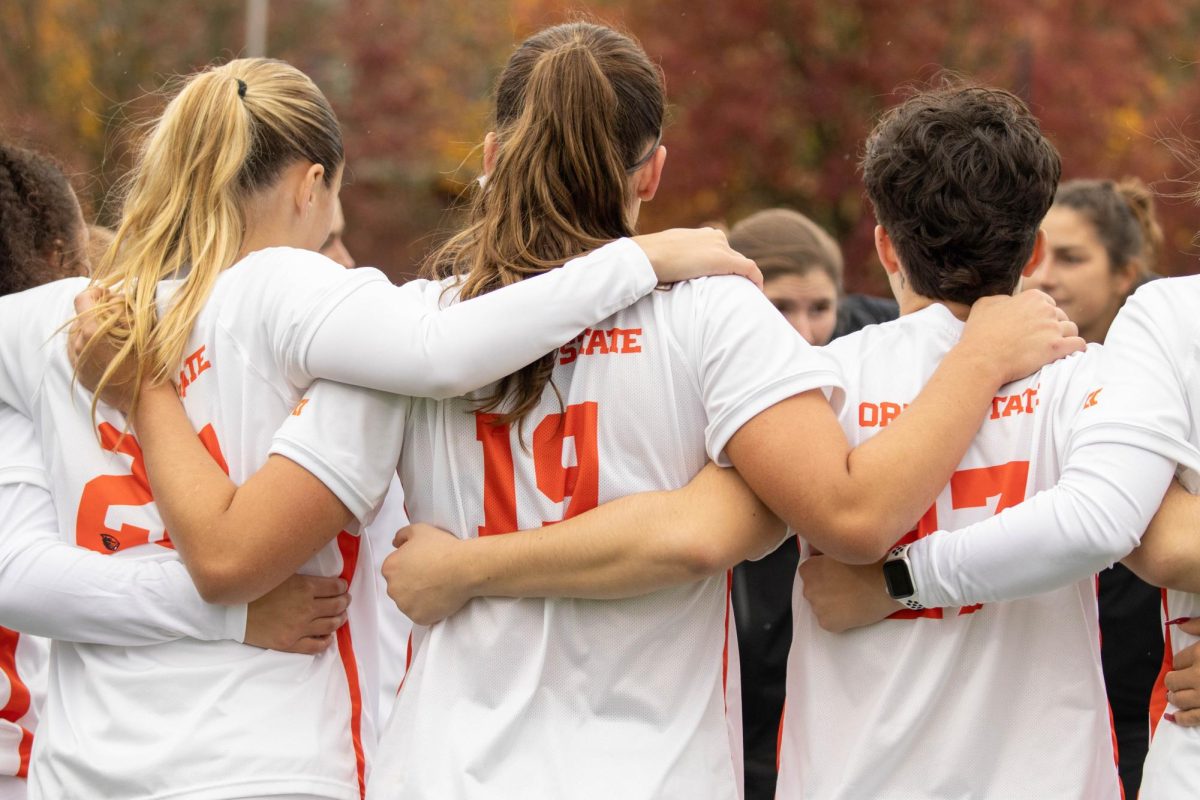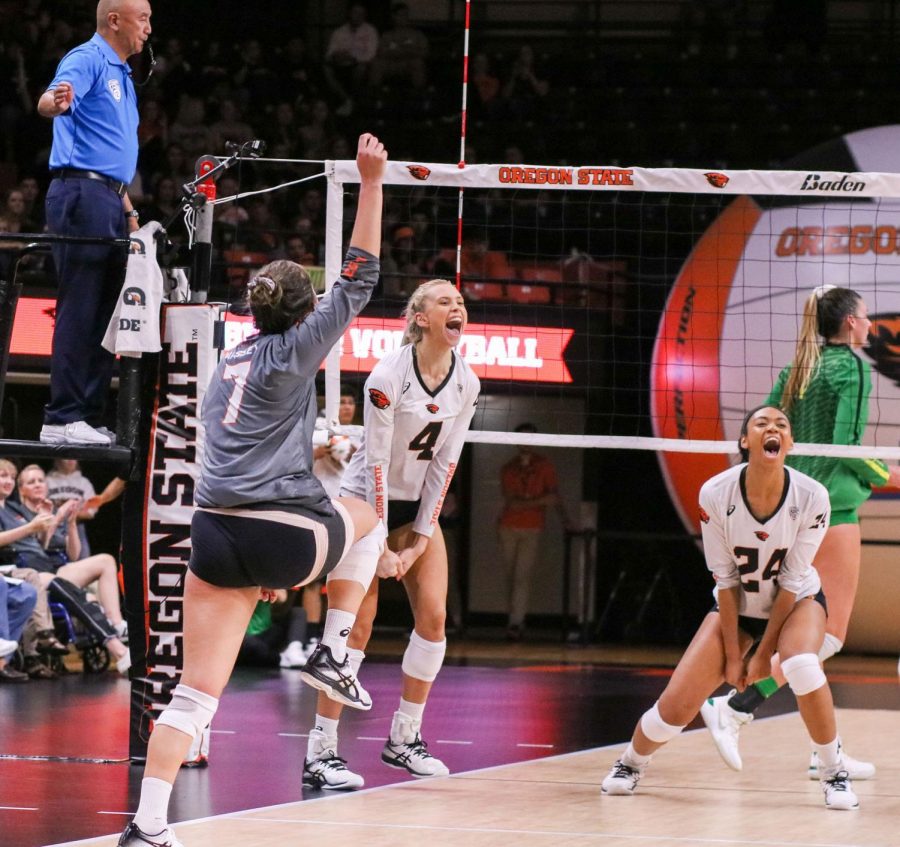The Sunny Side: OSU assembles sequoia sculpture in parallel to climate change efforts
A sculpture installation aptly named Emeritus, created by artist John Grade hangs between the Sequoia trees at the Memorial Union quad at Oregon State University on November 6, 2022 in Corvallis, Ore. According to Grade, the sculpture is inspired by the form of an ancient tree and is composed of thousands of resin pine cones.
November 7, 2022
Editor’s Note: This column does not represent the opinion of The Daily Barometer. This column reflects the personal opinions of the writer.
Descending in the negative space between three Sequoia trees in the Memorial Union quad is “Emeritus,” a sculpture created by John Grade, a sculptor who has pieces installed at Kew Gardens in London, England and other locations in Italy, France, Guatemala and more.
Made of resin, cedar and burned Sequoia tree pieces, the sculpture hangs from three surrounding trees where students can observe the ghostly vision of the sentinel through to the sky.
According to Peter Betjemann, Patricia Valian Reser center director of Arts and Education, the sculpture represents the resiliency of Sequoia trees that are facing extinction due to the climate crisis.
This sculpture is a grand statement. So the question stands: what is OSU doing to decrease its carbon footprint?
Before writing this, I thought OSU wasn’t doing much to lower their carbon footprint. However, that’s not true. In fact, there are many passionate individuals and departments that make an effort to increase sustainability.
“In a nutshell, buildings account for like 80% in a typical non-pandemic year of our carbon emissions that we are committed to reducing. The rest is a mixture of transportation, mostly air travel,” said Brandon Trelstad, Sustainability Officer for OSU.
Air travel includes flying OSU students, athletes and faculty on planes and makes up about 10% of all carbon emissions at OSU.
According to Trelstad, who devotes his time and effort to ensure sustainability, OSU has a nine step plan called the Path to Carbon Neutrality to decrease their carbon footprint. To name a few, they plan to make adjustments to systems already in place, such as heating and cooling, replace entire systems to be more efficient and engage the community to be more environmentally friendly.
OSU also has a 15-step sustainable transportation plan to be carbon neutral by 2030.
According to Trelstad, the latest solar panel system is 360,000 watts on the Campus Operations Building that will allow the facility to be carbon neutral in electricity. The Sustainability Department plans to install three more solar panel systems on campus starting this year.
Minimizing carbon emissions with such a large campus is a tough feat, according to Trelstad. Because of this, he predicts that OSU will have to purchase carbon offsets, which he explained as paying a third party entity to decrease their carbon emissions to offset emissions produced by OSU.
However, this means that carbon offsets do not actually minimize carbon emissions produced. Carbon offsets only allow polluters to equalize carbon emissions by paying another entity to minimize their own emissions. This is not an initiative that helps OSU’s goal toward carbon neutrality.
As far as what students can do to decrease their carbon footprint, Trelstad suggests eating less meat, paying more attention to clothing purchases within a world of fast fashion and trying out the carbon emissions calculator on the OSU Sustainability Office website.
In addition, OSU workers and members of sorority and fraternity life can get their Green Office or Green Lab Certification where anyone can implement green initiatives within their department.
Emeritus’s image does in fact represent OSU’s efforts to be more environmentally sustainable for the future of its students. For such a sizely entity, OSU is working towards carbon neutrality through multiple initiatives.
OSU should lean towards their initiatives that don’t require the purchasing of carbon offsets which don’t have a positive impact like their other plans do.
According to Betjemann, Emeritus will be moved to a remote location within an Alaskan forest in December of 2023 in partnership with Anchorage Museum.
“I really like the idea that people have an experience of anticipatory loss, when they’re standing in front of the piece,” said Betjemann. “That’s what we’re confronted with the Sequoia as a species. That’s how we’re confronted with environmental change.”

